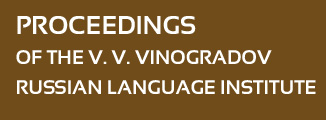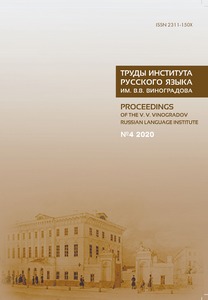ON THE IMAGE OF THE AUTHOR IN SATIRIC PROSE: M. E. SALTYKOV-SHCHEDRIN
Abstract:
The article examines figurative possibilities of Russian satirical prose of the 19th century based on the works of M. E. Saltykov-Shchedrin. Particular attention is paid to the expressive nominations of the author, their figurative word-formation structures, evaluative, ironic and text-forming occasionalisms, as well as other linguistic means which in Russian satirical prose of the 19th century play the role of a poetic device — the expression of the “image of the author” or “images of the authors” in their stylistic characteristic with the emotional-expressive role of creating negative evaluative names of features, actions or feelings. It can be said that satire is characterized by a special “image of the author” — a publicist. In satirical works, elements of artistic structures are widely used as a means of influence, which in the text alternate with publicistic methods of influence and documentary narration. Specific features of the expressive means of satire are determined by a combination of publicistic and belletristic linguistic techniques, which can be seen both at the “level” of composition and at the “level” of stylistic structure of the text. The composition of satirical works is characterized by a combination of features of publicistic and belletristic genres, which dictates a special relationship between the spheres of the author’s speech, the speech of the narrator and the speech of the characters, to whom the author often “entrusts” the expression of his views and assessments. This regards not only the positive characters, but also the negative ones, which is especially characteristic of the Aesopian language of satire.


